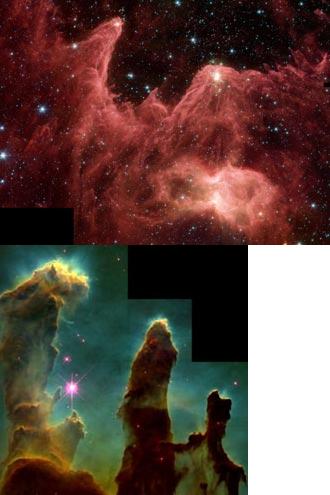The Spitzer Space Telescope took an image that is compared to the image of the Eagle Nebula, which is one of the most spectacular images taken by the Hubble Space Telescope

A spectacular image taken by the Spitzer Space Telescope showed giant columns of cold gas and dust, giving scientists an intimate look at the star formation process.
The image released Wednesday shows pillars stretching like fingers similar to the famous image of the Eagle Nebula taken by the Hubble Space Telescope in 1995. While the nebula in the Hubble image, taken in visible light, was called the "Pillars of Creation", the image taken by Spitzer in the infrared range prompted scientists to call the object the "Cosmic Mountains of Creation."
The image reflects a region of space known as W5, in the constellation Cassiopeia, located 7,000 light-years away, and which is dominated by a single massive star. The large columns formed by radiation and wind from hot massive stars contain hundreds of newborn stars.
"We believe that the star clusters that illuminate the end of the pillars are a product of the massive star of the area." said Laurie Allen of the Harvard-Smithsonian Center for Astrophysics. Spitzer was able to track the stars being born inside the columns due to his infrared capabilities. A visible light telescope would see those areas as dark columns surrounded by spots of light. The scientists believe that the columns will eventually become compressed enough to form a second generation of stars, which in turn will encourage the creation of subsequent generations.
